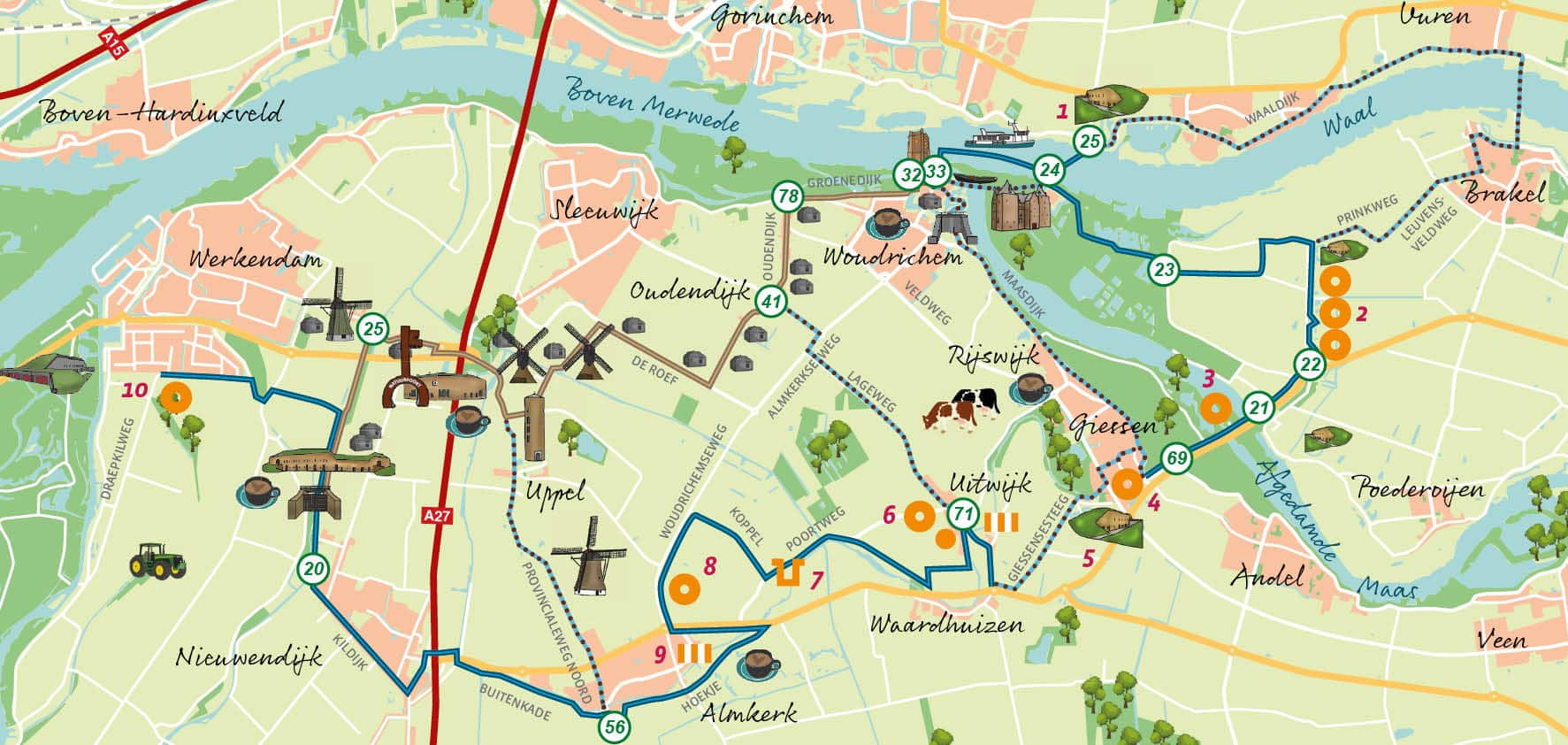Cycling & Stories along the Line
You are in the southernmost part of the New Dutch Waterline. Here you will find the largest collection of WW1 shelters in the Netherlands. For a long time, many of these shelters were not visibly present in the landscape. Some even disappeared completely underground. Farmers who wanted to get rid of one of these shelters dug a hole and the stand was dumped in. Others used it as a pigsty or made a flower box out of loose parts.
Around 2009, the shelters, and their historical value, were rediscovered. Erfgoed Altena enthusiastically picked up the project to make the shelters visible. Helped by Arie Schouten of the Menno van Coehoorn Foundation and driven by Kees van Maastrigt (who wrote a book about mobilization in this region), more shelters were discovered which, together with the forts, listening wells, sluices and trenches, formed the WW1 line; a unique way of national defense. Parts of the country could be inundated, or flooded to stop the enemy. In WW1, the Netherlands remained neutral and the army was mobilized but not at war. In WW2, the Netherlands was occupied by the German army for five years.
Want to know more about the New Dutch Waterline?Then visit Fort Giessen and the adjacent education park. Check in advance for current opening hours at www.forten.nl
You can rent a (electric) bicycle from various rental locations. Contact the relevant party for availability and bike rental.
Overview of all our routes in the Nieuwe Hollandse Waterlinie
We put our ear to the ground with excerpt 6 of the audio tour:
Meanwhile ... at the military station ...
The military office in Uitwijk was not the only one in the area. Every village along the line had a military office, employing officials called scribes, who arranged matters for the stationed soldiers, such as leave and pay (salary).
The military office knew which soldier could be found where. Perhaps at a fort, in the barn at the Koppel, in an encampment or even billeted with civilians. Letters from home could be delivered quickly to their destination.
A telegraph operator also always worked at such a military station. With a telegraph, which converted signs into an electric on-off signal, information was sent over long distances without time difference; the telegram.
Not always were such modern techniques used. In every place where a commander was stationed, you would also find a pigeon post. Partly because telephone cables had not yet been installed everywhere, the carrier pigeon was actually a common form of communication. Sending a postcard is something of all times. A week after the start of mobilization, a soldier sent his first postcard home. In telegram style, that is, and he did so in order to put as much information on it as possible.

Activity: cycling